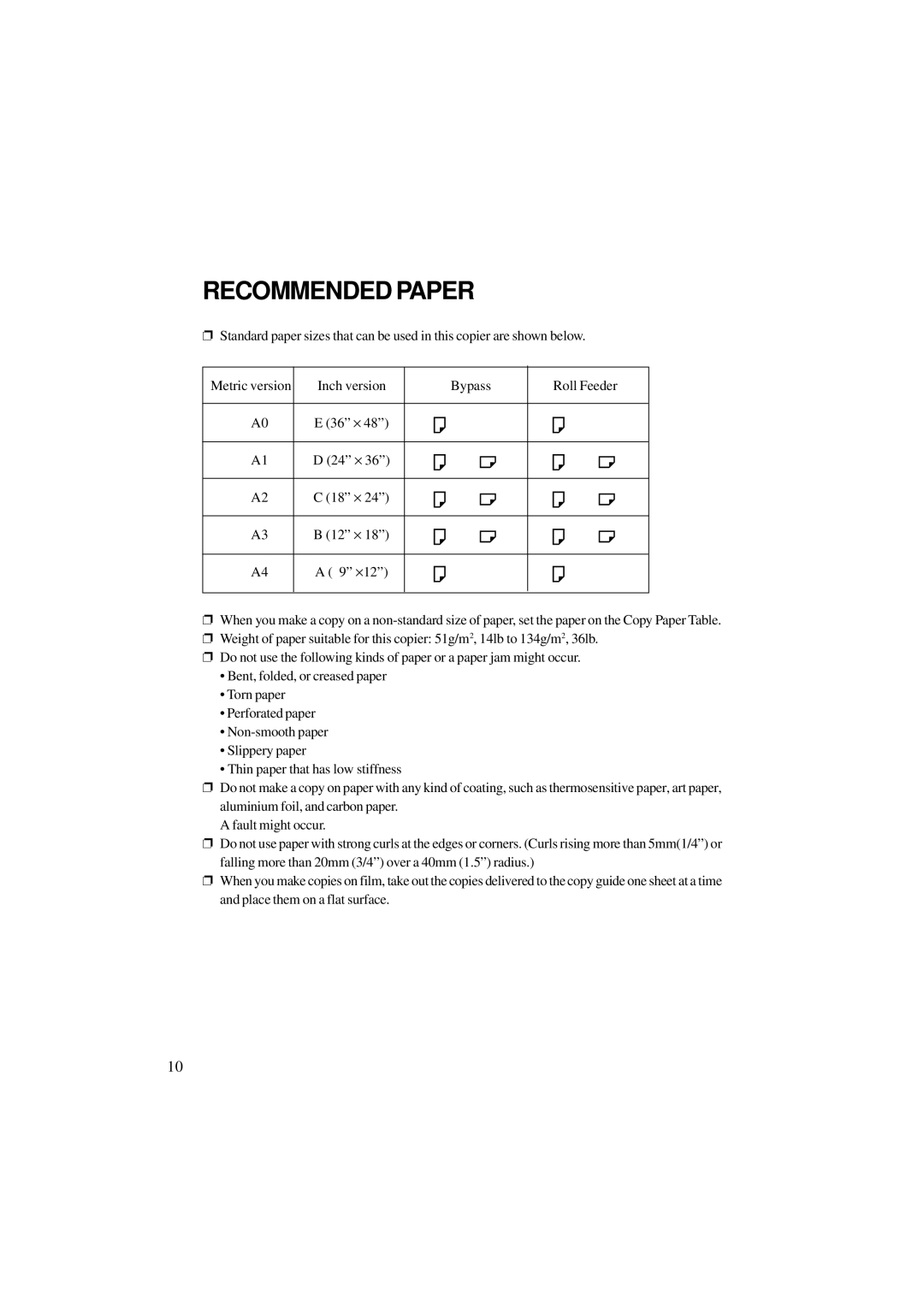RECOMMENDED PAPER
❐Standard paper sizes that can be used in this copier are shown below.
Metric version | Inch version |
| Bypass | Roll Feeder | |
|
|
|
|
|
|
A0 | E (36” × 48”) | K |
| K |
|
|
|
|
| ||
A1 | D (24” × 36”) | K | L | K | L |
|
| ||||
A2 | C (18” × 24”) | K | L | K | L |
|
| ||||
A3 | B (12” × 18”) | K | L | K | L |
|
| ||||
A4 | A ( 9” ×12”) | K |
| K |
|
|
|
|
| ||
|
|
|
|
|
|
❐When you make a copy on a
❐Weight of paper suitable for this copier: 51g/m2, 14lb to 134g/m2, 36lb.
❐Do not use the following kinds of paper or a paper jam might occur.
•Bent, folded, or creased paper
•Torn paper
•Perforated paper
•
•Slippery paper
•Thin paper that has low stiffness
❐Do not make a copy on paper with any kind of coating, such as thermosensitive paper, art paper, aluminium foil, and carbon paper.
A fault might occur.
❐Do not use paper with strong curls at the edges or corners. (Curls rising more than 5mm(1/4”) or falling more than 20mm (3/4”) over a 40mm (1.5”) radius.)
❐When you make copies on film, take out the copies delivered to the copy guide one sheet at a time and place them on a flat surface.
10
